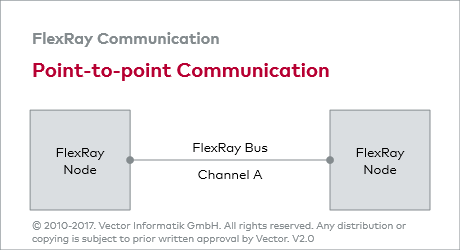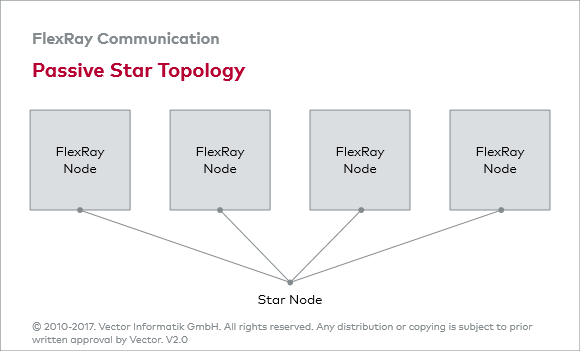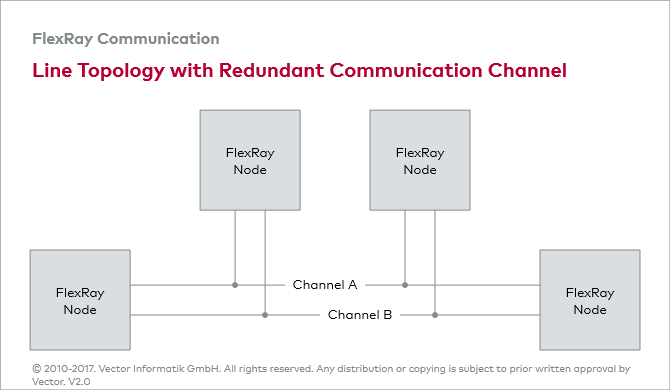Passive Topologies
FlexRay communication is not restricted to any specific physical topology. A simple point-to-point connection is just as feasible as a line topology or star topology. In addition, the system designer can choose between single channel or dual channel communication.
In the case of point-to-point connection, two FlexRay nodes are directly interconnected. Electrical Physical Layer Specification (EPL Specification) prescribes that line length may not exceed 24 meters. In the case of three FlexRay nodes, the FlexRay nodes are interconnected via a central but passive star node.
Such a topology is referred to as a passive star. Even in this physical topology, no more than 24 meters line length is allowed between any two FlexRay nodes. In addition, no more than 22 FlexRay nodes should be connected in a passive star according to EPL specification.
With at least four FlexRay nodes, the system designer can choose between the passive star topology and line topology. In the line topology the FlexRay nodes are connected to the bus via separate tap lines (stubs). The figure “Line Topology with Redundant Bus” shows a FlexRay cluster based on a line topology, in which the bus, i.e. the communication channel, is designed to be redundant. This means that data can be transmitted via both channel A and channel B.
If a line topology is used, according to the FlexRay specification a maximum distance of 24 meters should not be exceeded between any two FlexRay nodes when the communication channels of the FlexRay cluster are operated at 10 Mbit/s. A reduction in data rate enables a greater maximum distance between the two FlexRay nodes farthest apart from each other. By FlexRay specification, no more than 22 FlexRay nodes should be connected to a line.
As was the case in the passive star topology, the line topology is also subject to limits in the number and lengths of stubs, in order to maintain signal integrity despite the serious problems that can be expected in the area of electromagnetic compatibility.



